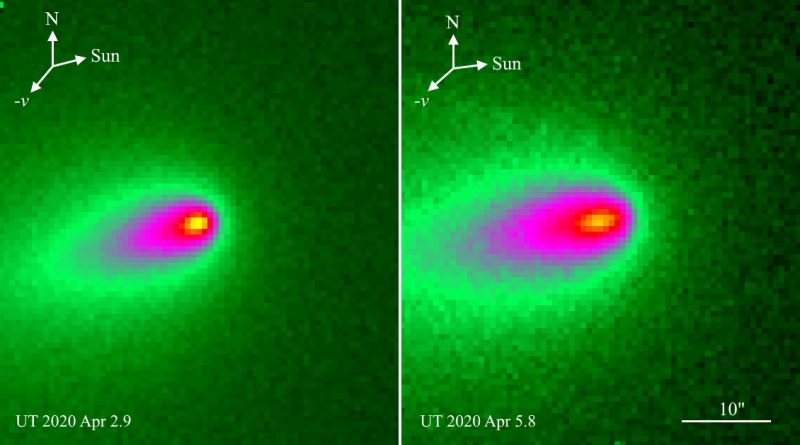
Updated April 12, 2020.: The shattered heart of Comet C/2019 Y4 (ATLAS)
Updated April 11, 2020.
Recent observations of Comet C/2019 Y4 (ATLAS) show that it’s fading in brightness. According to observers’ reports, after gradually brightening to magnitude 8 as it crossed Mars’ orbit, the comet has appeared fainter during the last few nights. It has sunk to a magnitude of around 8.8 to 9.2 (the bigger the number, the fainter the sky object). Is Comet ATLAS disintegrating? Are our hopes for a bright comet – or even one visible to the eye – dashed? It appears so.
Astronomers Quanzhi Ye (University of Maryland) and Qicheng Zhang (Caltech) submitted an astronomical telegram titled Possible Disintegration of Comet C/2019 Y4 (ATLAS). According to their telegram:
We report the possible disintegration of comet C/2019 Y4 (ATLAS), revealed by the public monitoring program carried out by the 0.6-m Ningbo Education Xinjiang Telescope (NEXT). Images taken on UT 2020 April 5.6-5.9 showed an elongated pseudo-nucleus measuring about 3 arcsec in length and aligned with the axis of the tail, a morphology consistent with a sudden decline or cessation of dust production, as would be expected from a major disruption of the [comet’s] nucleus.
In the days following the original announcement, other observers also began reporting signs of disintegration:
Does this mean the end of Comet C/2019 Y4 (ATLAS)? Probably. However, time and time again, comets have shown themselves to be erratic and unpredictable. In case Comet ATLAS does remain visible – and in one piece – EarthSky shares some charts below to help you find the celestial visitor.
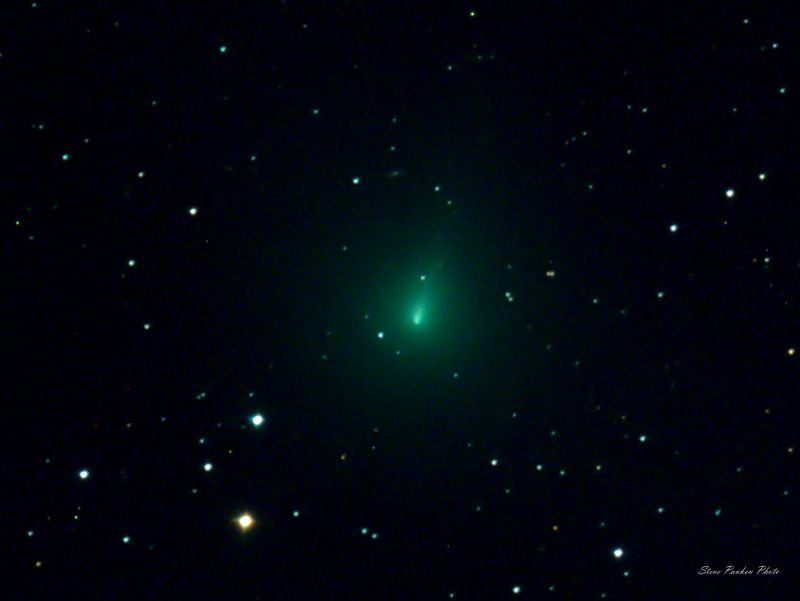
Original article is below. Be aware that, if the comet has faded – as now appears likely – all bets are off for brightness predictions.
A recently discovered comet is getting the attention of astronomers and sky enthusiasts as it’s become brighter than expected in the last few days. Astronomers using the ATLAS (Asteroid Terrestrial-impact Last Alert System) in Hawaii discovered Comet C/2019 Y4 (ATLAS) on December 28, 2019. As of mid-late March, it shines at about the brightness of an 8th-magnitude star – not visible to the eye yet – but within reach of medium-sized telescopes in dark skies. The comet is currently crossing Mars’ orbit and is approaching the inner solar system. As it gets closer to us, it’ll get brighter still. You’ll find charts for observers at the bottom of this post.
Comet ATLAS should become bright enough to be easily visible in binoculars, and perhaps bright enough to be seen with the unaided eye from dark sky locations.
Just know that comets are notoriously erratic and inherently unpredictable! We will have to wait to see how Comet ATLAS performs.
Comet Atlas last night from my backyard over a period of approximately five hours. #Astrophotography #astronomy #science #space #comet #cometatlas pic.twitter.com/R8I4oDXkzC
— ?Matthijs Burgmeijer (@MMBurgmeijer) March 27, 2020
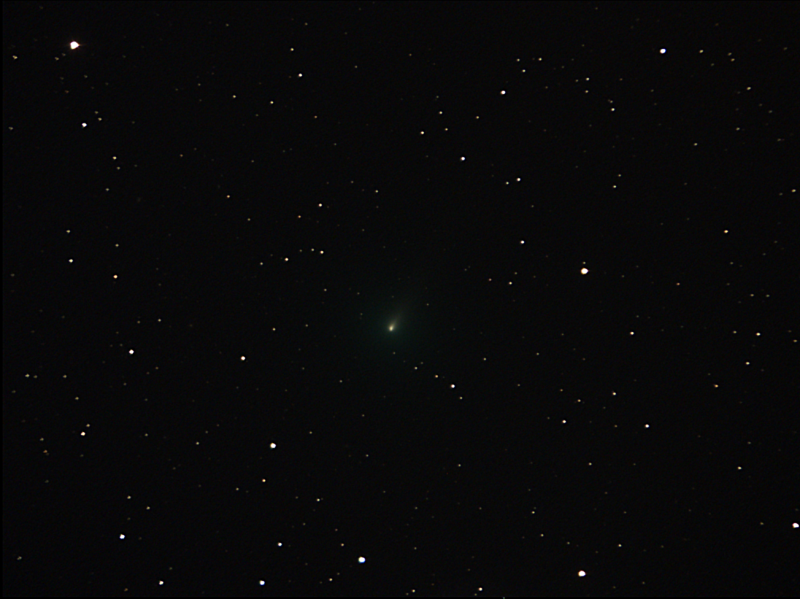

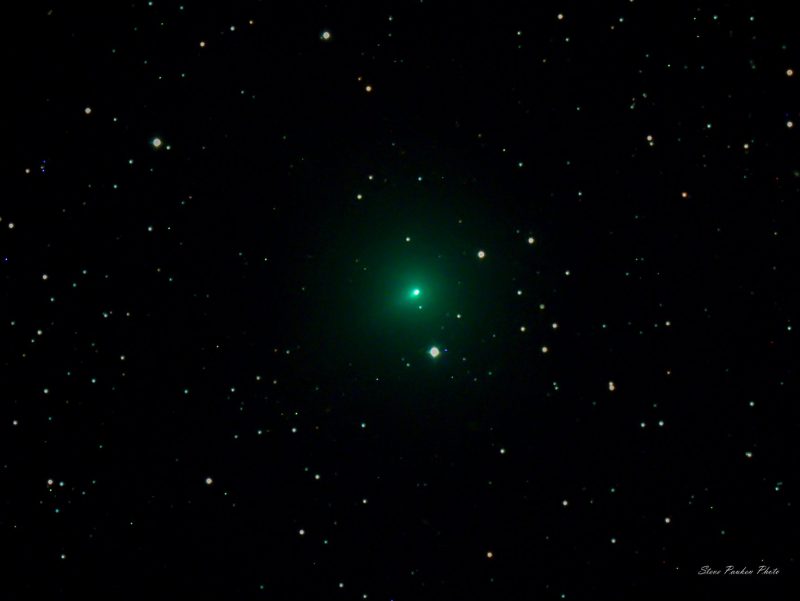
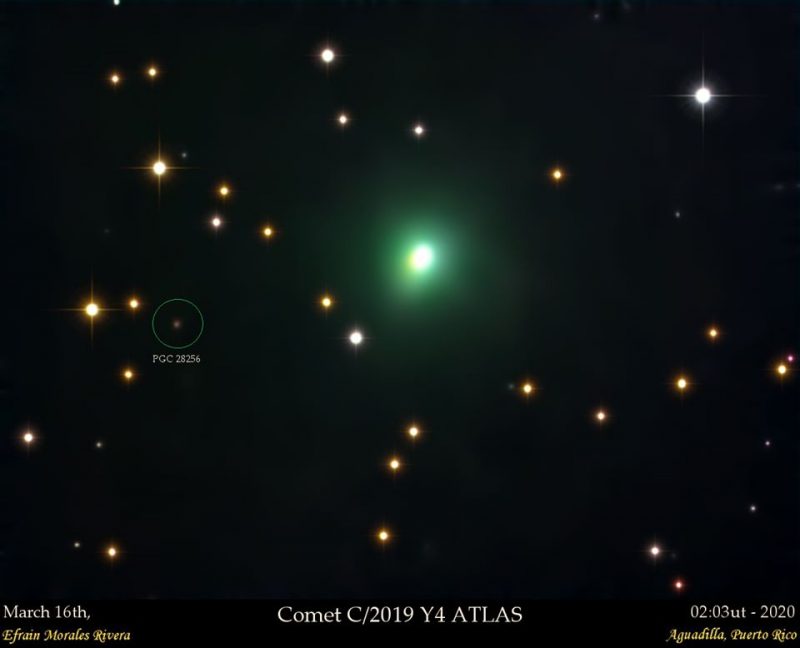
Astronomer Alessandro Marchini, director of the Astronomical Observatory at the University of Siena in Italy, sent the video below on March 21, the day after the death toll from COVID-19 in Italy had ramped up dramatically. He wrote:
During this surreal period of the health emergency for the Covid-19, I’m trying to use our social channels to entertain people forced at home. This evening I observed the comet C/2019 Y4 ATLAS during a Facebook Live streaming and here is a time-lapse I made with the images I acquired with our telescope. I hope all is fine with you.
Follow Osservatorio Astronomico Università di Siena on Facebook
Follow Osservatorio Astronomico Università di Siena on YouTube
Thank you, Alessandro, and please stay safe.
Comet C/2019 Y4 (ATLAS) will come closest to Earth on May 23, 2020. Its perihelion or closest approach to the sun will occur on May 31, 2020.
If predictions are correct, Comet ATLAS might reach a visual magnitude of +5 around May 1, 2020. That is theoretically bright enough to be see with the unaided eye, but the fuzziness of faint comets can make them harder to spot than comparably bright stars. When looking for fuzzy objects, it’s best to use averted vision: explanation here.
How bright will the comet get after that? Estimates of Comet ATLAS’s peak brightness range from magnitude +2 to -6 during perihelion or closest approach to the sun, but please know that many comets fizzle and never reach their expected brightnesses. We will have to wait and see.
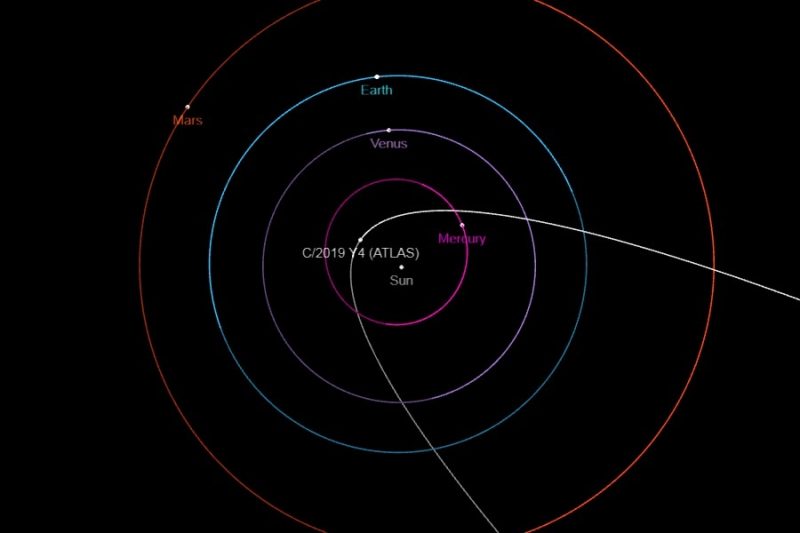
How close to our planet will the comet come? The celestial visitor will pass at a huge distance, at some 72,610,769 million miles away (116,855,706 km).
Comet C/2019 Y4 (ATLAS) will pass very close to the sun, and thus may disintegrate before becoming bright enough to be seen with the unaided eye.
It will pass at some 23,517,819 miles (37,848,261 km) from the sun, which is closer to our star than Mercury’s elliptical orbit (about 36 million miles or 57.9 million km on average).
Calculations by NASA/JPL indicate Comet ATLAS takes some 6,025 years to complete an orbit around the sun. Observations show it has a similar orbit to the Great Comet of 1844, which suggests that Comet ATLAS may be a fragment of the same 1844 comet.
Will Comet C/2019 Y4 (ATLAS) provide a good show or just fizzle out? Let’s keep a close eye on it, just in case! Bookmark this article, as we’ll provide updates and new photos when we can …
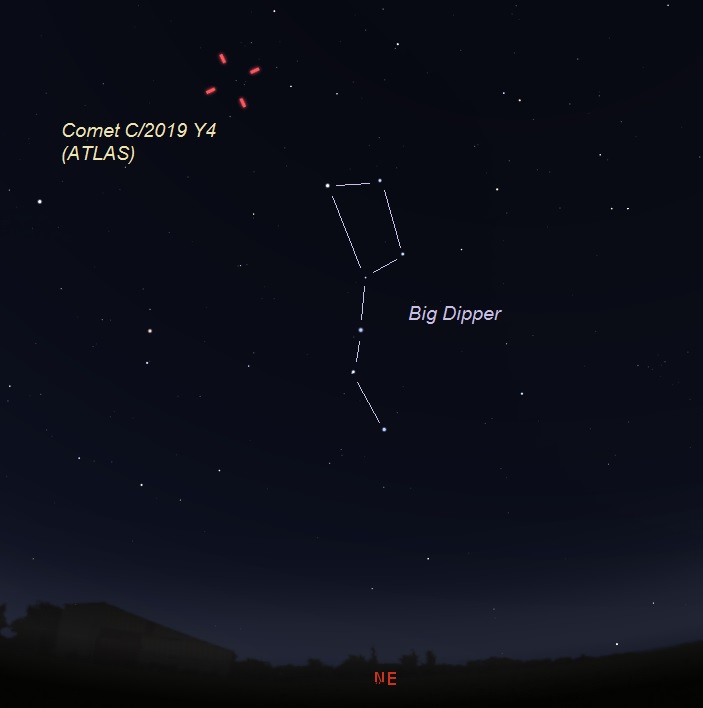
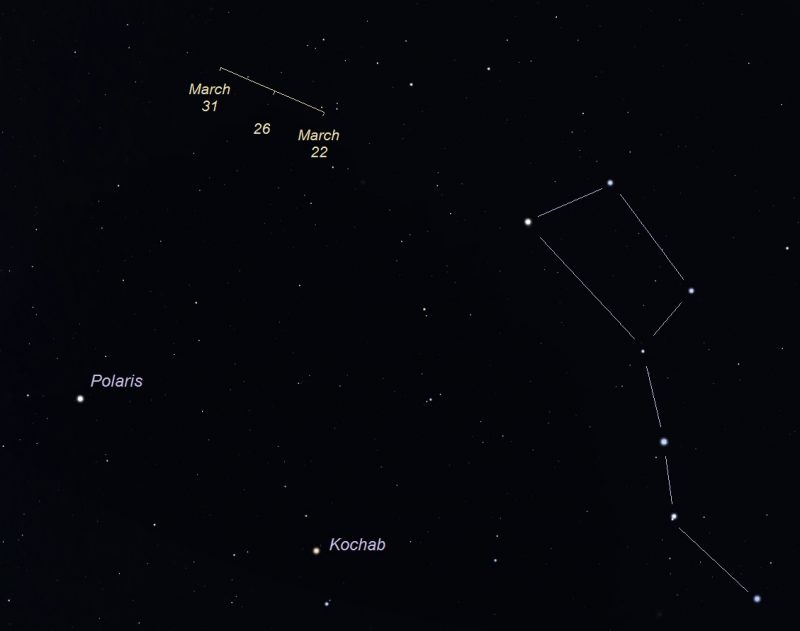
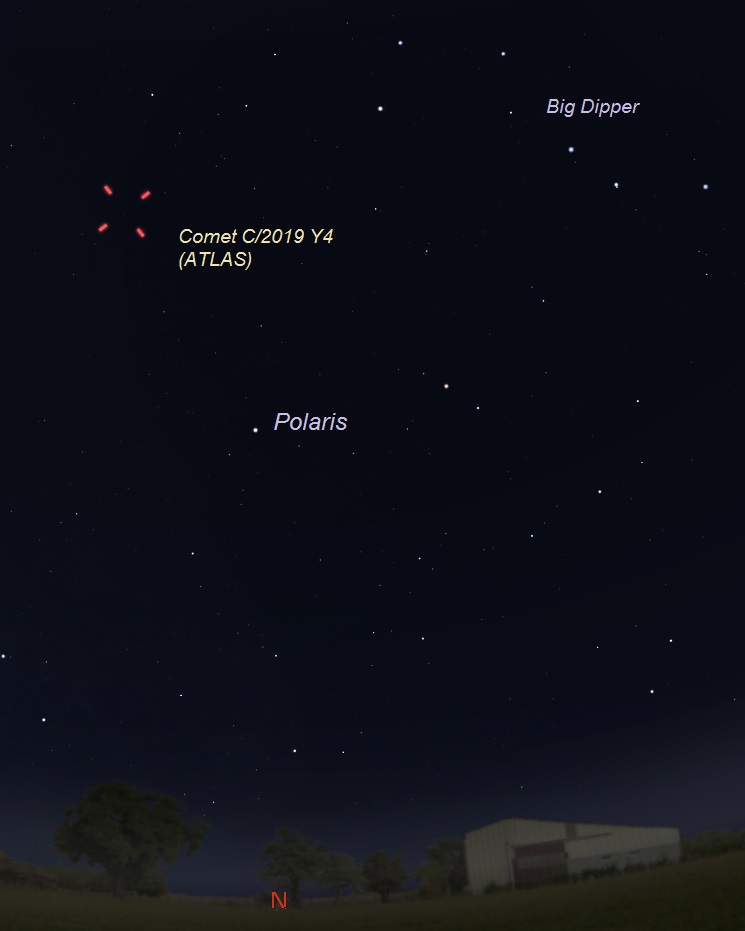
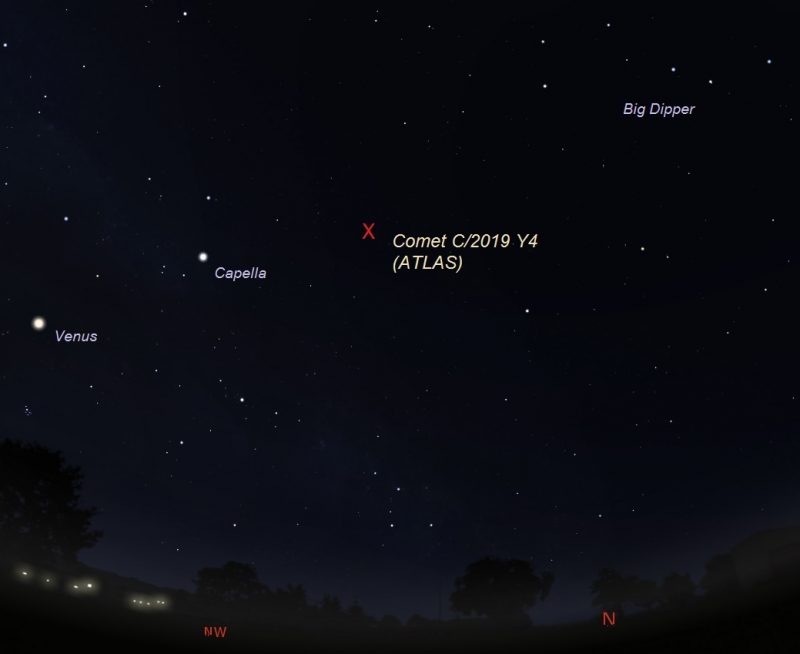
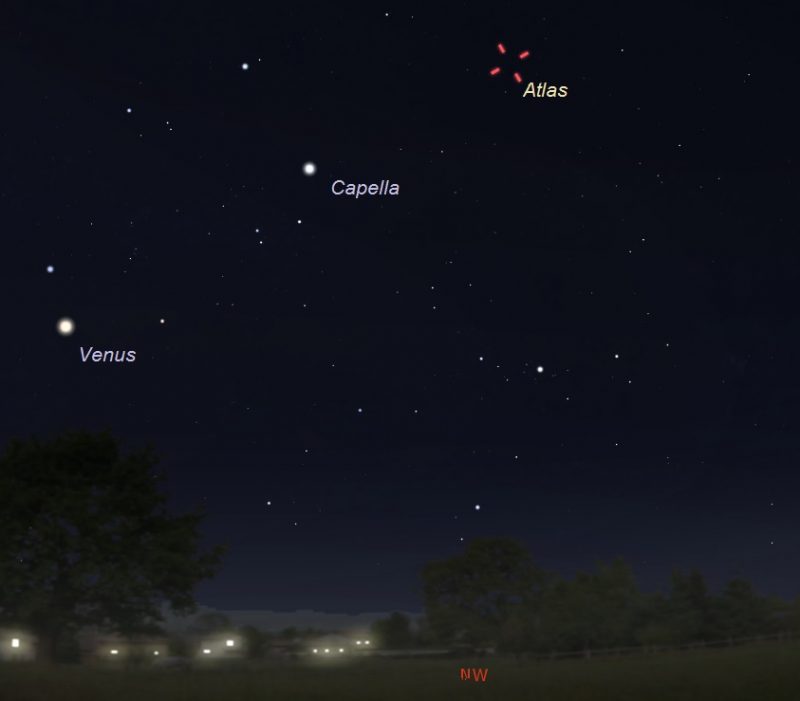
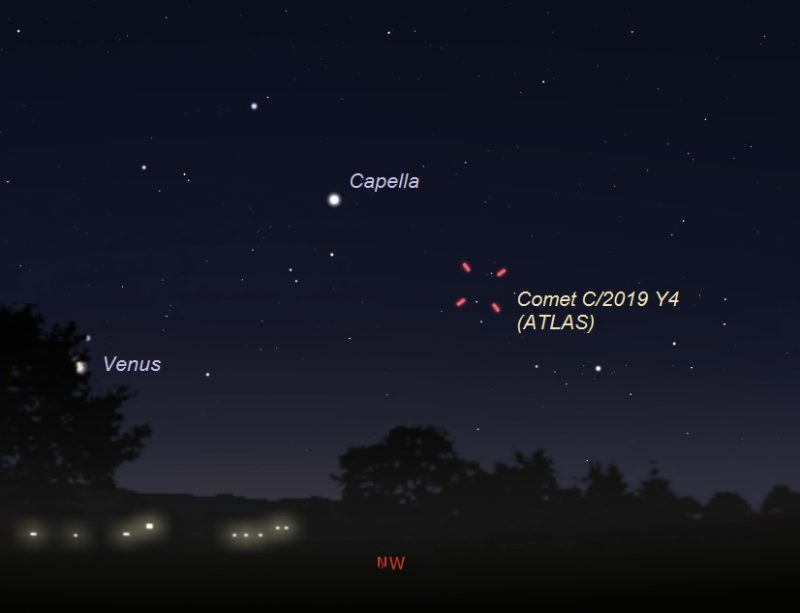
Bottom line: Recently discovered Comet C/2019 Y4 (ATLAS) appeared bright. Many hoped it would become bright enough to see with the eye alone. But in early April the comet began to fizzle.











